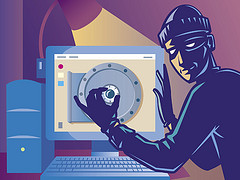Australian businesses are living with a sense of security about the safety of their sensitive data that just isn’t true, according to the latest report from McAfee.
The report found 94% of organisations globally think their company is protected against Advanced Evasion Techniques (AET).
AETs are methods of disguising malware so it is able to penetrate business networks undetected by splitting the components of a malware attack into pieces, allowing it to bypass a firewall or IPS appliance. Once it is inside the network, the code reassembles itself and continues its mission of collecting data, destroying networks and exposing company IP.
There are more than 800 million known types of AET and the number is growing.
McAfee APAC CTO, Sean Duca, said businesses need to ensure their security solutions provide visibility into whether the business is protected.
“Australian businesses should expect more from their security provider, and demand more from the technology they already have,” he said. “If their security solutions are not able to detect all types of attacks which disguise themselves and attempt to penetrate the network, or fully visualise the threat landscape, their data is at risk.”
The report, entitled; ‘Security Industry’s Dirty Little Secret,’ surveyed 800 CIOs and security managers from Australia, the United States, the United Kingdom, Germany, France, Brazil, and South Africa, revealing that 15% of Australian respondents said their company had experienced a breach in the past 12 months, while the global average is 22%.
More than half of global respondents said that AETs posed an immediate and serious threat to their company and 69% said AETs can already exploit known vulnerabilities, while 59% of Australian respondents said AETs can already exploit known vulnerabilities.
Globally, nearly 40% of those breached believe that AETs played a key role in breaches over the past 12 months.
To read more on this story, click here.
